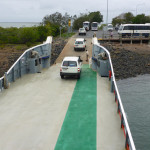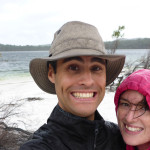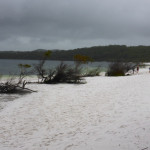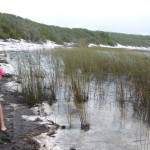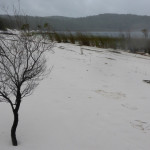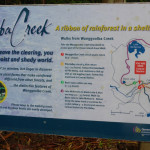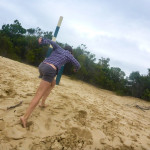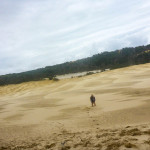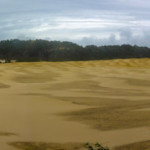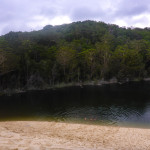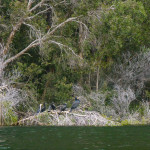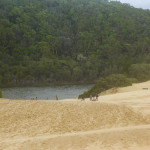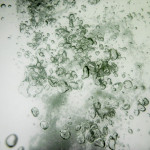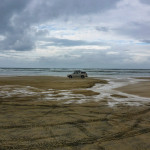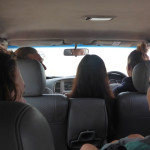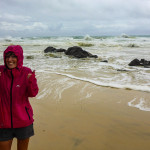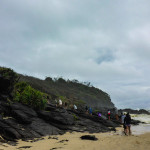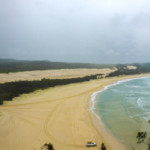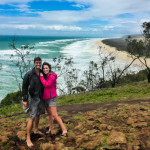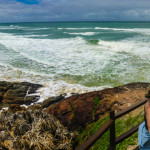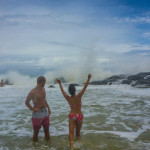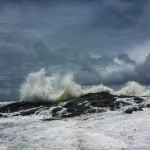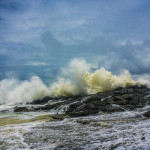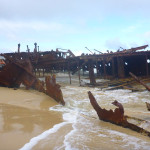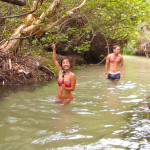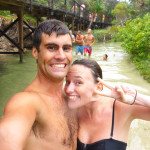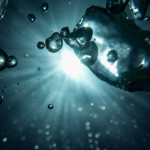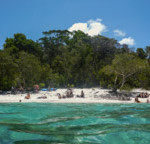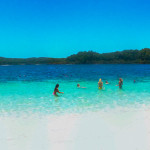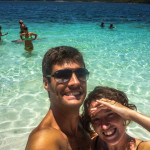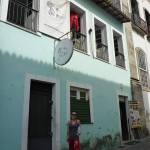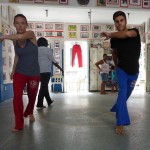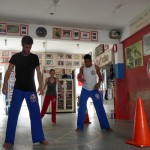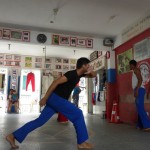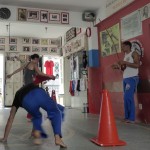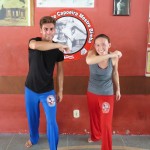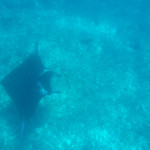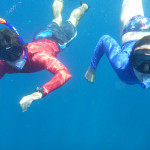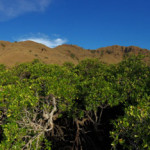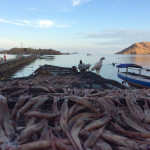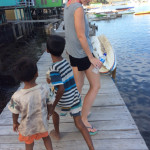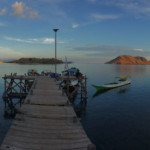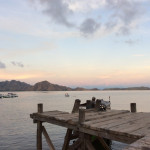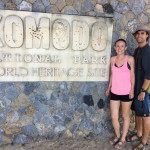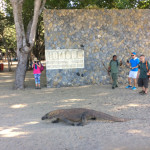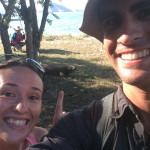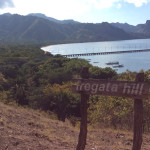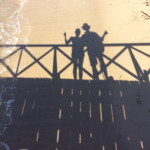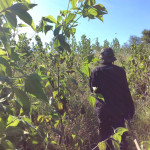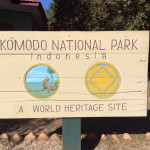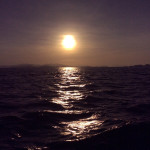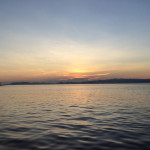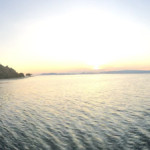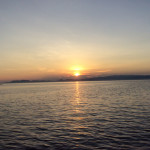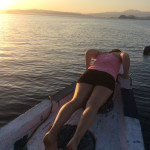Three days of crystal clear freshwater pools and streams, rain forests surviving on sand, shipwrecks and 4×4 driving across the beach – brilliant! Only slight downside was that it rained non-stop for the first two days! Still, a trip that’ll stick in my head for a long time. How can you not when it’s like this (Lake McKenzie)?
We booked the trip (Palace tours www.palaceadventures.com.au - they also offer non self-drive options) in Cairns and it basically consisted of the following:
- 1 night accommodation at NEXT backpackers hostel in Hervey Bay
- Day 1: Drive to Fraser and see Lake Birrabeen, Wanggoolba Creek and Lake Wabby. Camp that night
- Day 2: Up early for a full day or in the island to see Indian Head, the Champagne Pools, The Pinnacles, Maheno Shipwreck and Eli Creek. Camp
- Day 3: Back to the mainland after visiting the main attraction (and thankfully it was beaming sun that day) Lake McKenzie.
- 1 night accommodation at NEXT backpackers hostel in Hervey Bay
There were a few trips to choose from but most of the others we saw weren’t self-drive, or started from Rainbow beach, which after taking the ferry crossing to Fraser Island, you then spend the rest of the day just driving up the beach and not seeing much (starting the trip in from Hervey Bay means you go across the island on the first day so you can see things along the way).
We arrived at the hostel (via the greyhound bus from Airlie Beach) a couple of hours before the 4pm tour brief in which they described the overall organisation of the trip including bringing your own food for the trip, camping (no toilet/shower facilities as it’s on the beach), who can drive (over 21 with manual licence) and group sizes etc. The aim being you group together to buy some food and organise who’ll be in your car for the trip (8 people per car, inc. driver). Luckily we already knew a few people that we had met on a tour in the Whitsundays so we grouped up with them and another couple.
The next morning we checked out and sat through a formal DVD of what to do on the trip regarding driving techniques (driving on sand, keep left, don’t stop), dingoes (be dingo safe people!), and the amount you can be fined if you don’t dig a deep enough hole for your, eeer, waste… All there was left to do was load up the cars (to the brim), meet our part-time guide/school teacher and head to the ferry! Apparently I was the most eager to drive so I found myself in the driving seat for most of the trip ![]()
- On to the ferry over to the island
- First tracks of the day!
About half an hour later we were on the island and gunning it across the sand, and the clouds started closing in!
It only took a few seconds to realise you can’t actually steer on sand and you’re forced more to follow in the tracks of other cars than to cut your own – something that was a little irritating when the car ahead couldn’t stay straight and you get forced into the same manic left and right motion as them. Eventually, after a bit of beach, we reached road and a stop in a semi built up area (I had no idea towns existed on Fraser).
Lake Birrabeen: Luckily when we first got out it wasn’t raining but after 5 minutes the heavens opened on those that had decided to go for a swim in the relatively cold lake, and the game of football that had begun in the beach…! After about half an hour of enduring the rain we headed back from our walk round the lake to find everyone pretty much waiting at the cars because of the rain! Sadly this was pretty much the outcome of most of our visits, bar the last day for Lake McKenzie.
- It rained, lots
- White sand though!
- …and mud!
We traveled onwards for another good hour and got to our next stop, Wanggoolba Creek. It was more of a lunch stop than anything, but nice to stretch the legs. Spent about half an hour there and carried on to Lake Wabby.
- Map of the area
Hidden behind a few massive sand dunes was Lake Wabby. The freshwater lake was pretty big, however you’d be hard pressed to know it was there if someone didn’t tell you the way. Great for sand tobogganing, or just generally being kids in a massive sand pit…
- The massive dune that hides the pool
- Bubbles in the lake!
- Back on the ‘road’
We travelled onwards though some dense wooded areas (yes, the only rain forest on a sand island in the world!) and along the beach to our camp ground.
The camp was very basic, a few small 4 man tents (of which we were luckily able to get one to ourselves) and a few large pieces of tarpaulin supported by a few rods. There were some largish bbqs, however they were fairly difficult to light in the tropical storm we were in…! A couple of ‘roo burgers and beers later, we were all a happily chatting under cover.
The following day we set out with a new eager driver – one of the girls wanted to try out beach driving. We didn’t realise quite how long and taxing that stretch of driving would be! Eventually, we ended up at the tip of the island where it all started, Indian Head. A large rocky outcrop that formed the beginnings of the island, sand gathered behind it and it began to grow from there. As one of the highest points on the island (if not, the highest) it’s a great lookout across the beaches and inland onto the constantly shifting sand flats.
- Keeping spirits up!
- View from the top – Lake Wabby to the left
Our next haul was to the Champagne pools, so named because of the white break over the rocks into pools at the water’s edge that creates small bubbles that slowly accumulate in the rock pools. It was still extremely windy that day so it was great to see it in full force. The upside of having a bit of bad weather I guess! I can see the attraction of the pools, but when we were there the winds made it resemble more of a wave pool than a Champagne pool!
- Down to the pools
- Will and Mimi enjoying the bubbles!
- Pretty violent today!
A couple of hours there and we headed back down the coast to visit a few landmarks. First stop was the yellow cliffs or The Pinnacles. This was a ‘light’ photography stop, not much to see apart from the layers of sand that formed the cliffs in that area.
Second stop was the shipwreck of the SS Maheno. A ship that was being towed to Sydney at the end of its life in 1935 that got decoupled from its tow in heavy storms and drifted to Fraser Island and has been there ever since. It was however subject to a number of bombings and tests for the next few years so it didn’t really rest in peace!
- SS Maheno
- SS Maheno
Our final stop of the day was at Eli creek. An amazingly clear fresh water creek that ran into the sea, had been turned into a lazy river and was pretty darn cold in the wet! Still thoroughly enjoyed it though.
- Not so keen on getting in!
- Some braved it!
- Mimi is loving it
- Smiling, but it’s cold
We headed back to the camp and settled down, hoping that tomorrow the rain would have disappeared and have a bit of sun for the best lake on the island…
It may have been our last day of the tour, but our first full day of sunshine!! If we had to pick one day for it to be brilliant sunshine, it would have been today! We packed up camp and headed off to Lake Mackenzie in the 4×4′s. By the time we got there it was pretty busy, probably because everyone was hellbent on making the most of the sun.
The lake itself was amazing to see in the walk down from the car park. Distant green banks surrounding the still turquoise water and to top it off, the most amazing white sandy beach (I’d say, better than that of Whitehaven beach in the Whitsundays). It would have been nice to while away the rest of the day there but unfortunately our tour was at an end so we had to get back to the 4x4s and head for the 2pm ferry.
- Pretty fine lake…
- Bubbles pic! Such clear water
- Amazing view from the middle of Lake McKenzie
- Camera couldn’t cope with the white!
Back on solid land, all there was left to do was unpack and get our deposits back for the vehicles. We stayed the night that was included and headed off the next day.
Overall, a great trip. We were fortunate enough to be in a great group (apart from 1 crazy driver…!) that we had met before and I was the most keen driver so got plenty of time behind the wheel. In our opinion, this trip is much better than the Whitsundays, and that’s us saying that with 2 of 3 days rain!



